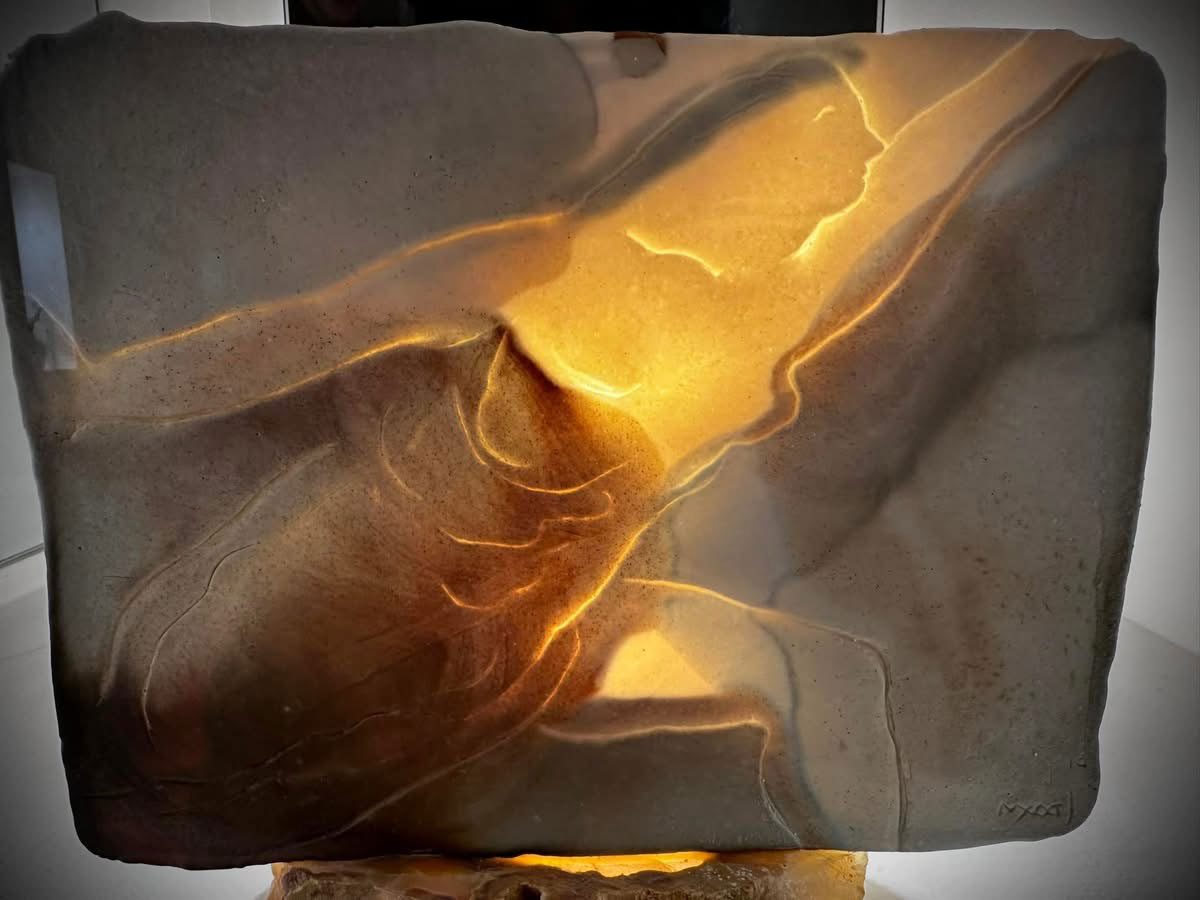INTERVIEW: Dimitris Sarafianos-Faye Tzanetoulakou
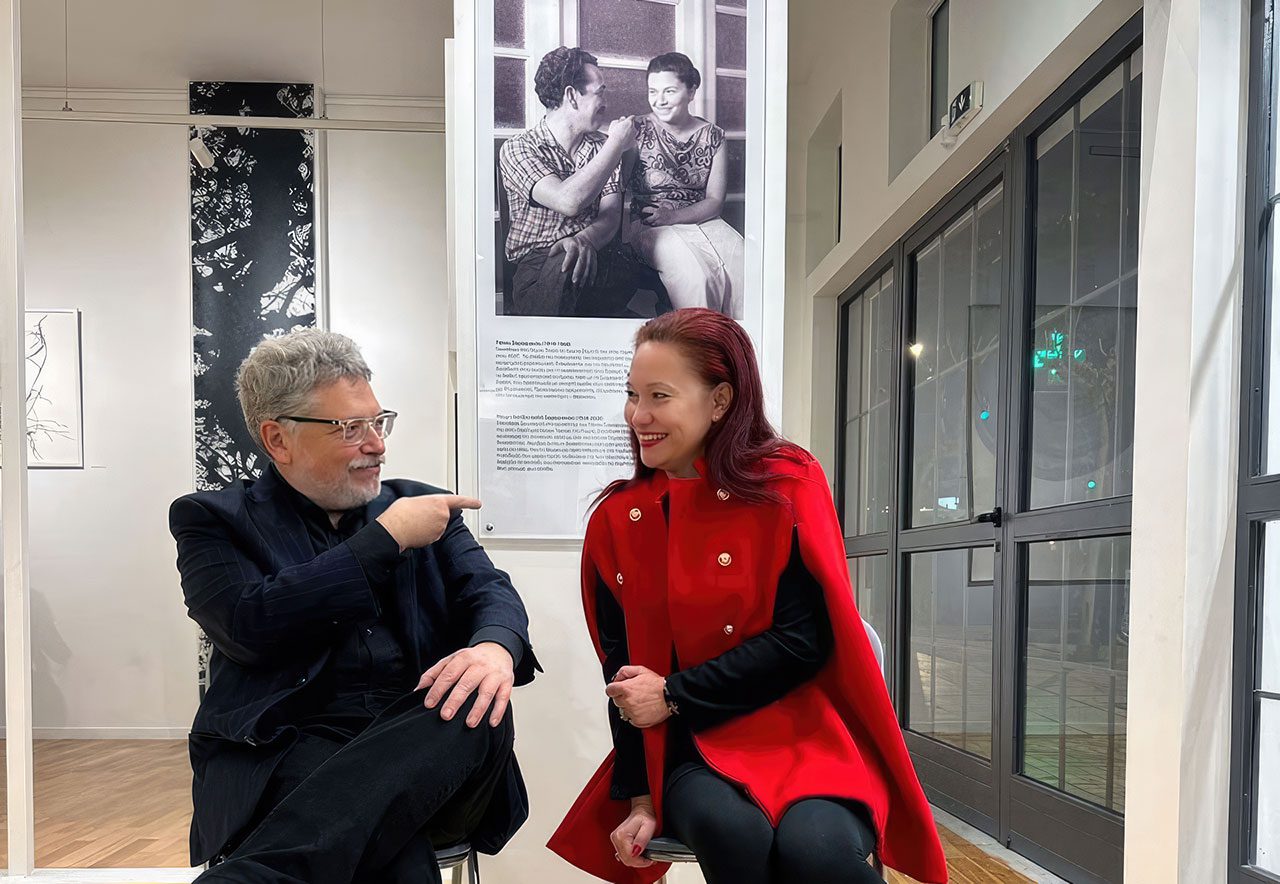 Lofos Art Project is a new welcoming space that houses the work of two major artists, Panos Sarafianos and Mary Hatzinikoli, while also fostering direct interaction and dialogue with the present and with artists who live, work, and are active in the contemporary Greek art scene. On the occasion of the large group ceramics exhibition “Chthonic Light: How Ceramic Art Engages with the Present,” we speak with the founder of the Hill Art Project, Mr. Dimitris Sarafianos, and the co-curator of the exhibition and external collaborator, art historian Ms. Faye Tzanetoulakou, about the exhibition they organized, the space, its goals, and the present and future of the Lofos Art Project.
Lofos Art Project is a new welcoming space that houses the work of two major artists, Panos Sarafianos and Mary Hatzinikoli, while also fostering direct interaction and dialogue with the present and with artists who live, work, and are active in the contemporary Greek art scene. On the occasion of the large group ceramics exhibition “Chthonic Light: How Ceramic Art Engages with the Present,” we speak with the founder of the Hill Art Project, Mr. Dimitris Sarafianos, and the co-curator of the exhibition and external collaborator, art historian Ms. Faye Tzanetoulakou, about the exhibition they organized, the space, its goals, and the present and future of the Lofos Art Project.
By Efi Michalrou
Photo: Lofos Art Project Archive
Dimitris Sarafianos
We would like to start with you Mr. Sarafianos and tell us how the idea of Lofos Art Project started?
As a lawyer dealing with copyright and artists’ rights, I realized at one point that while the older generations of artists spoke with respect and love about Panos Sarafianos, my father, the younger generations didn’t even know him. They had already passed almost 50 years since his untimely death in 1968 and 20 years since the last retrospective at the Athens Municipality Art Gallery. At the same time, no works of his were exhibited in public collections. So I started to gather all the archival material (photographing of works, research in public libraries, transcription and digitization of tapes) in order to create a website with all the information (reports, reviews, texts, list of students, etc.). It was a job that took almost five years, but I think it was worth it (www.panossarafianos.gr).
After the death of my mother in 2020, the question of what will become of the projects was raised. So I looked for a place where the works can be exhibited, but not just that. I wanted a living space, a space where my father’s and my mother’s work can converse with the work of younger artists, but also with other art forms and it will be accompanied by workshops and discussions around contemporary art in a way that can each and every one approaches it. After all, my father taught that every person can become an artist, that artists should offer the gift of creativity to all people. That is why he participated in the Art Group a, and designed the Lofos (Hill) art movement, where artists and non-artists would live and work together to co-create works and livable spaces with respect for nature and human needs.
Is the location coincidental or is it related to the fact that in Kypseli was also the workshop of your mother Mary Hatzinikoli?
First of all, my father’s historic atelier was on Ithakis Street, below September 3rd. My mother’s workshop was in Busgou and then she moved my father’s workshop to Valtinon Street. So there was a historical continuity. The truth of course is that I searched for 3 years in several areas. After all, it is not a period when it is easy to find a suitable place, let alone for a cultural center. But there are times when things find their way by themselves.
You lost your father at a very young age. Do you feel that with this space, you created a connection with him, as a custodian of his work?
Although I have no memories of my father, I have a connection with him through his works and the messages they convey, but also through my mother, who organized for him 3 retrospective exhibitions, as well as through his students who told me stories about how he managed with his teaching to leave them free to develop their personality, instead of stifling it with standard techniques. The existential cries of anguish of modern man that scream through his works, the perspective of a world that will be characterized by collectiveness and dignity, as it emerges through its signals with roots and explosions, but also my father’s attitude to life so as my mother’s, deeply influenced my own views on the role of a citizen in society, let alone the role of a lawyer. I do not consider myself a custodian of his work. My father’s work and the values that accompany it, are a gift to society and the main goal of the Lofos art project, and mine is their wide dissemination.
In Greece, it is not customary for descendants to create Foundations that house the work of artists, unlike in America. This apart from the financial and legal requirements that you know better than all of us, where else do you think it is due?
What is certain is that there is no public concern for the preservation and promotion of the work of artists who are dying and who are part of our cultural heritage. There are artists without descendants who go from museum to museum to donate their work and they don’t accept them because they have nowhere to store them. Others typically say “put them on the cart to take them away”! But even when there are heirs, not everyone has the ability to build a cultural space, nor is there any institutional framework that strengthens such a direction. Perhaps the issue should be collectively addressed, as was done with the defense of copyright. I hope that on the occasion of our own endeavour, the discussion around the issue will be opened.
What is your goal regarding Lofos and how do you see it growing? What is your vision for the future?
It is very interesting that people who come to Lofos for the exhibitions and events tell us how welcoming the place is and how moving what we do is. Already at the opening of exhibitions and at our events, the space is flooded with people who participate. And I say participate, because the work of art opens a dialogue with its viewer and this dialogue is conveyed both through the events and through the discussions that take place. After all, part of the space has been rented to operate a coffee bar that facilitates discussions. The events are videotaped and uploaded to Lofos Facebook page. Our goal, in addition to the ongoing exhibitions and events, is to publish a book with all the conferences’ minutes, but also to create a web space where not only texts and articles can be published, but also collective works can be created. This is what my brother is doing with a group of his students. From here on, we are particularly interested in the implementation of educational programs, as well as the creation of partnerships with other cultural venues. Lofos Art Project is open to suggestions. Thus we hosted theatrical performances, musical evenings, book presentations, as well as the exhibition “The Art of Immersion. Learning from Mark Rothko” organized by AMKE Art, graffiti in the city curated by Faye Tzanetoulakou, and the event “The Mediterranean Rothko” of the scientific group The Mediterranean Rothko. We also collaborated with the Center for Post-Capitalist Culture to organize a conference on artificial intelligence. The Commons is in the DNA of Lofos.
What does your collaboration with Ms. Tzanetoulakou mean to you, what are the points of contact between you two, and what are the points of divergence, so that one complements the other?
Faye Tzanetoulakou and I met in other capacities. She as an environmental activist and me as a lawyer of activists. Of course, I had read and uploaded to my father’s website her excellent review in Avgi newspaper for the retrospective exhibition at the Athens Municipality Gallery in 1997. So when I found the Lofos site, I first approached her for collaboration and I have really been impressed by her scientific knowledge, her aesthetic criterion, her indomitable energy, her unquenchable passion for art and her particularly poetic way of writing, which turns her art criticism into works of art. I think we share the same views on the importance of collective actions (and) in the artistic field, on the need for art not to be a decorative treatment of power relations, but an immersion in the essence of things, in the existential anxieties and needs of man, which is fragmented and alienates himself from nature and his fellow human beings. I don’t see any discrepancies. The way my father’s work affected her from the start is the same as mine. As if the roots from my father’s signals have bound us in a river of ebony glue flowing in the same direction. So the complementarity is magical. Just one example: in our first exhibition “Panos Sarafianos. Care policies. Inspiring 3 generations of painting” Faye brought works by young artists who were in direct conversation with my father’s work and placed at their core the topicality of modernism. In the end it turned out that they were overwhelmingly students of my father’s students! Without her Lofos would be half.
In closing and after thanking you, we would like you to tell us what this systematically and methodically dealing with art means to you, apart from law (you had and still have close contact with artists since you defend their rights), but your role as a curator is very different now.
I thank you for your excellent questions. With two parents who are artists, I was born and raised in art and I also have a special interest as a lawyer in the area of culture, but also in the aesthetics and sociology of culture, as I believe that you cannot deal with legal and constitutional law without knowledge of the social and more broadly philosophical parameters of legal regulation. Due to Lofos, my intense engagement with the observation of visual events led me to start writing critical texts, since Art Criticism has the potential to further advance the dialogue opened by the work of art. Much more likely, this applies to the work of Art Curating that integrates a work into a new context of dialogue and interpretation. It was something that came to me through the reflections that the project opens up and the values of my parents, but also through my collaboration with Faye Tzanetoulakou.
Faye Tzanetoulakou
Ms. Tzanetoulakou, how did you meet Mr. Sarafianos and what does your collaboration mean to you?
This is a truly happy instance of serendipity. Having visited the retrospective of Panos Sarafianos in 1997 at the Municipal Gallery of Athens, I discovered this huge Greek Abstract Expressionist, in the same spectrum as his American colleagues, with a opus that is not limited to morphological conquests but has a deep and visionary social character. It would be a lifelong dream, I thought then, to engage curatorially with his work. Soon after that, Panos Sarafianos was not brought to me by my professional involvement in art, but by my activist struggles for the protection of the environment, from where I was introduced to the charismatic lawyer, Dimitris Sarafianos. Just before entering his office I wondered if he belonged to the same family with the artist. And when I saw my favorite works on the walls, and he shared with me his vision for Lofos, then I understood that Dimitris and I share unbreakable bonds of love for art and freedom.
How did the collaboration come about? What gaps, in the field of Art, do you wish to fill?
Dimitris Sarafianos belongs to those unique cases of descendants of artists who take care of their parents’ legacy with touching thoroughness. When it comes to two landmark visual artists in recent art history, such an action is deemed imperative. And that is exactly what we are trying to achieve together. To scientifically study and record the history of the last 70 years of Greek art, a valuable part of which was the work of Panos and the work of Mary, a history that has only been recorded in fragments until today.
Lofos is a space that houses the work of two great artists such as Panos Sarafianos and Mary Hatzinikoli, and at the same time open to new artists, but also to society itself, as you organize Discussions, Conferences, etc. Do you want to explain to us the goals and the Vision you have?
Lofos houses the permanent Collection of Panos Sarafianos and Mary Hatznikoli and at the same time hosts periodic exhibitions with themes inspired by the works of the two artists. In these temporary exhibitions, a “flow of generations” participates, as experimentation in artistic creation does not know about generations in the sense of age categorization, on the contrary, both curators, in the two group exhibitions we have undertaken together so far, love to follow the timeless dialogues that develop between works by creators who may be decades apart but are united by a thirst for creation and the production of a visual effect that speaks to today. The image is complemented by the word, through a rich program of round tables open to the public.
We are in the second year of Lofos’ operation with an exceptionally large exhibition of ceramics, which, from the point of view of contemporary art, is not often organized. How did the idea come about?
After the success of last year’s opening with works inspired by the painting of Panos Sarafianos, this year Mary Hatzinikoli had her honorary time. This exhibition has been a really big challenge. Clay since the time of Hatzinikoli was a medium that many considered intertwined with decoration and usability. It doesn’t help that a ceramic work usually needs a pedestal to be presented, which immediately makes it inaccessible to the viewer’s personal, experiential space. In this exhibition, the turning point happened! We went back to the chthonic sources of clay, to its earthy, muddy essence, to its direct relationship with the human hand, to the breath of the earth through its material skin. And we studied how when it is baked, light penetrates through its molecular matter, how its densities and transparencies are illuminated, and at the same time how it is kneaded, dug, shaped, carved, how it shapes the space and how it animates our desires and hopes, our mistakes and frustrations, our nightmares and dreams, our need to understand nature within and outside us, our faith for freedom. Throughout this enchanting journey, Mary Hatzinikoli held our hand tenderly and decisively. All 45 contemporary ceramic artists who were invited to converse with the Chthonic Light of her gaze, responded with all the power that flows from the depths of artistic inspiration. We are particularly happy that we also have with us creations from the Psychosocial Rehabilitation workshops of the Dafni Hospital, which demonstrate that for our fellow human beings who find it difficult to manage their daily lives, how insurmountably therapeutic and creative medium ceramic art is. At the same time, at the opening, we had the dynamically physical performance of Filippos Vassiliou. We invite viewers to browse, until 31/12/2024, the unexpected narratives that are constantly developing in the exhibition, as if this alive substance called clay, never dries up.
From Rothko to Ceramics and beyond (?) What is your program? Is it specific artistically in one direction or is it open?
Lofos Art Project is the exhibition manifestation of our spirit that must be constantly open. The Permanent Collection, due to the rich work of the artistic couple, will be renewed and will display little by little its small wonders, like a Cabinet of Curiosities. The program of periodic exhibitions will follow this enduring act of enchantment in spite of the hard times, such as the celebratory exhibition for the 120th anniversary of the birth of Mark Rothko with the participation of 25 outstanding Greek and foreign artists organized by Art Graffiti in the City and curated by me. Already 2025 is predicted to be a very interesting year for Lofos, with the attention also turning to other forms of artistic creation.
What does your collaboration with Mr. Sarafianos mean to you, how free do you feel to articulate your own speech? What are the points of contact between you and what are the points of divergence, so that one complements the other?
Ms. Michalarou, what do you think is more inspiring than curating? An inspiring co-curating! The innate urge I have as an unruly spirit of art towards freedom, blossoms through osmosis with Dimitris Sarafianos’ unquenchable and prismatic spirit. Every time we immerse ourselves together in life as art, something simple happens. But also amazing at the same time. The one is constantly completing what the other one had in mind. There is no egocentricity anywhere, only a noble amalgam of generation of ideas. This is something I haven’t come across in 25 years of being in the art world. I have great respect for the founder of Lofos, for his struggles, his values, his attitude to life and to society as a whole, because this quintessentially moral attitude defines human culture. I believe and hope that we will create beautiful, thoughtful partnerships that will be enjoyed by all who believe in the naked truth of art on the stage, and not the kind of art that creeps behind the scenes.
In closing and after thanking you Ms. Tzanetoulakou, exercising Art Criticism at a time when in Greece it is a species on the verge of extinction, with a sense of responsibility and seriousness, systematically, as a professional in the field who monitors and covers everything, do you exercise a corresponding criticism of yourself when you organize an exhibition? Do you make a strict self-criticism in the art program and the choices of Lofos?
I am very glad Ms. Michalarou that such an important question comes from you, a colleague whose work I appreciate and thank you for our fruitful conversation. The ability to criticize art is the result of years of studying art and the daily friction with it. It is something very serious that I do not take lightly at all. And obviously there is good and not so good art that has to do with a number of factors that we have learned to recognize and that mainly concern the consistency of the artist in his work. But it is not possible for somebody to criticize a product of culture when they do not bear the corresponding consequence in their character and pursuits. The exhibitions I organize, when I go to see them at the opening night I become the strictest judge, often too much. Nevertheless, there is so much excitement in this new project of Lofos that we pay attention to every aspect of its organization and operation with such dedication and care, and that is why after each exhibition, and the demanding parallel program that also runs with workshops and events, that we feel exhausted! Of course we are grateful for any creative advice and suggestion for improvement, so as to see this intellectual child grow up and leave its mark as an open, experimental, pioneering topos.
Download Greek version here.
Participating Artists: Georgios Alexandridis, Matina Anastasiou, Dimitrios Antonitsis, George Vavatsis, Filippos Vasileiou, Pilar Mayorga Barrientos, Maria Vlandi, Voula Gounela, Grigoria Vryttia, Charalambos Daradimos, Stathis Dimitriadis, Mahi Dimopoulou, Zina Diakomi, Loukia Thomopoulou, Marion Inglessi, Stella Kapezanou, Marigo Kassi, Katerina Katsifaraki, Thanos Kyriakidis (Blind Adam), Konstantinos Ladianos, Nikos Liaskas, Aggeliki Loi, Kyriaki Mavrogeorgi, Maru Meleniou, Christina Morali, George Oiback, Kostas Panopoulos, Aggeliki Papadopoulou, Eleftheria Papadouraki, Sofia Petsa Poutouri, Periklis Pravitas, Vasiliki Sagkioti, Giorgos Sarafianos, Panos Sarafianos, Valinia Svoronou, Vera Siaterli, Nikos Sklavenitis, Efi Spilioti, Adonis Stoantzikis, Eftichia Tzanetoulakou, Kleopatra Tsali, Giorgos Tserionis, Mary Hatzinikoli-Sarafianou, Dionisis Christofilogiannis , Theodora Chorafas
And the Psychosocial Rehabilitation and Reintegration Workshops – Ceramic Workshop (Psychiatric Hospital of Attica – Daphni)
Info: Curators: Faye Tzanetoulakou, Dimitris Sarafianos, Lofos Art Project, 39, Velvendou str., Kypseli, Athens, Greece, Duration: 1/11-31/12/2024, Days & Hours: Tue-Sun 18:00-21:00, www.lofosartproject.com/
First publication: www.dreamideamachine.com
© Interview-Efi Michalarou

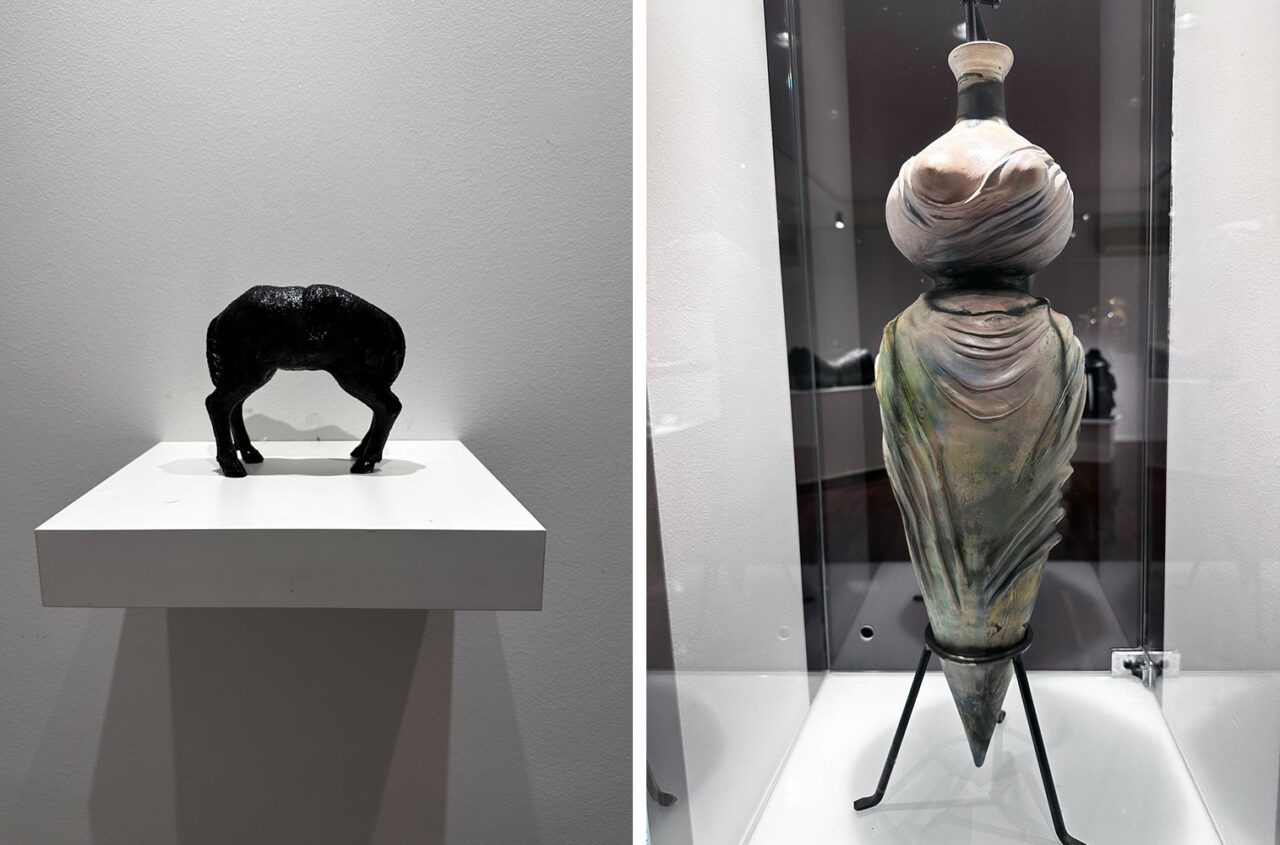
Right: Loukia Thomopoulou, Empowered Woman 4, 2023, Courtesy the artist and Lofos Art Project
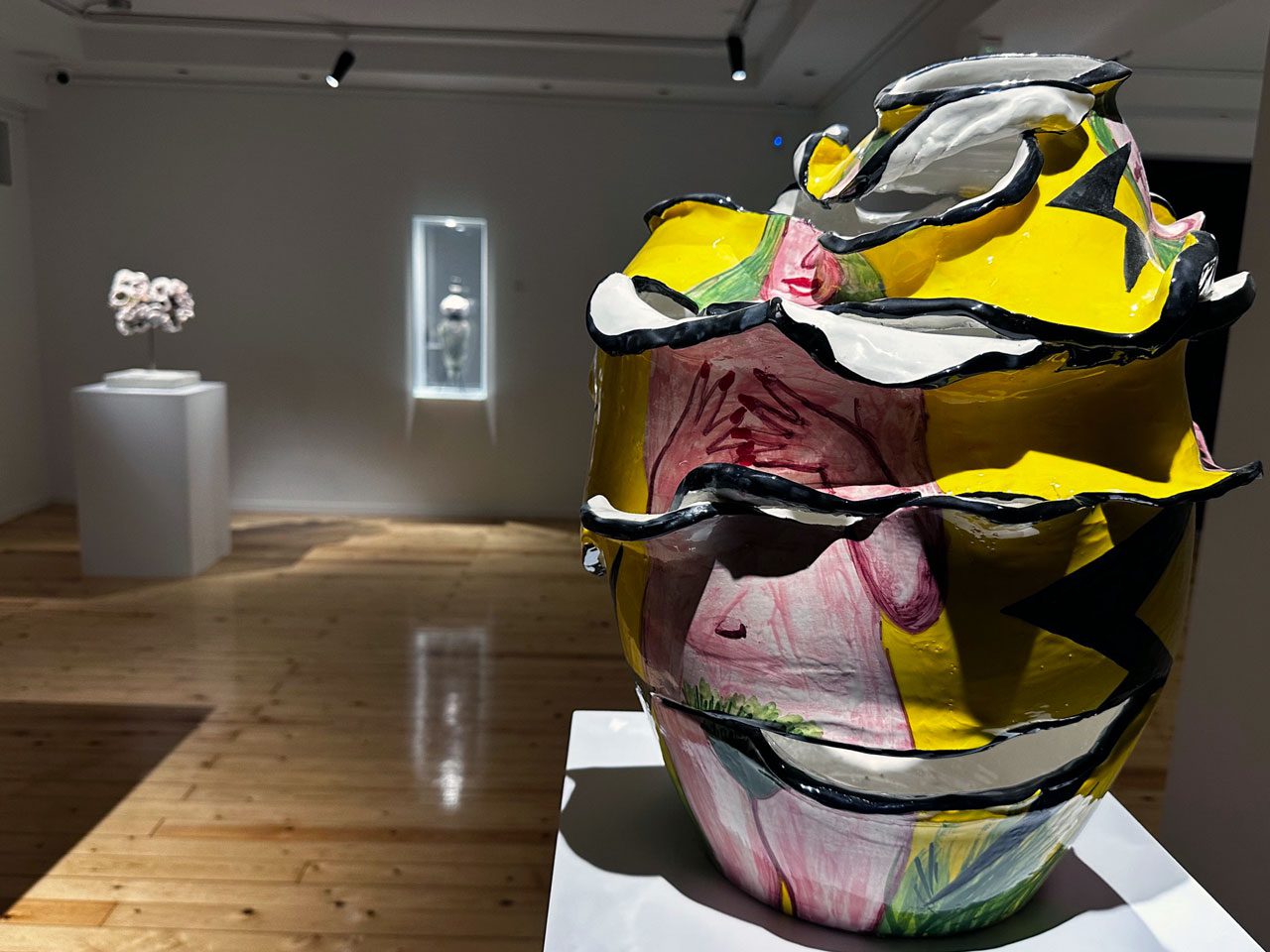
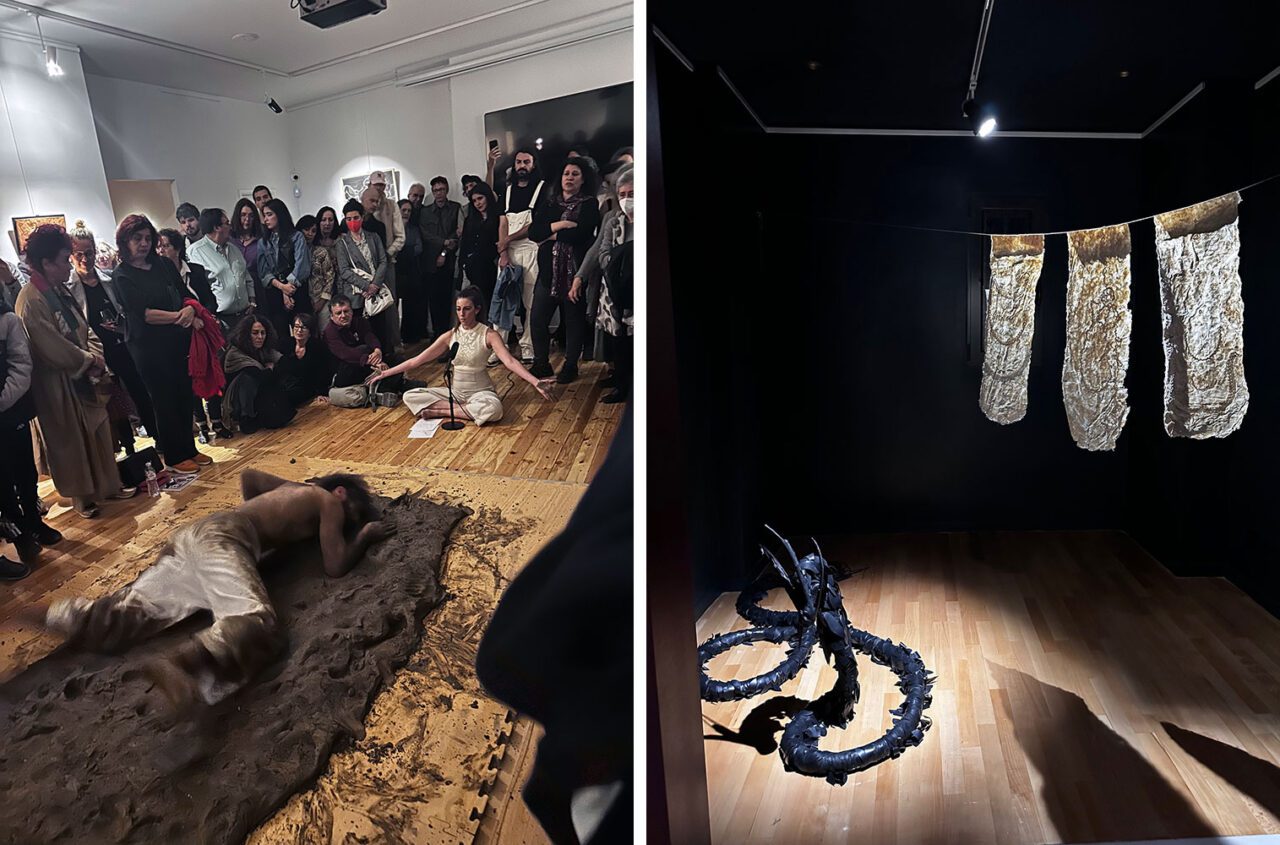
Right: , Katerina Katsifaraki, Laundry, 2023, Courtesy the artist and Lofos Art Project
